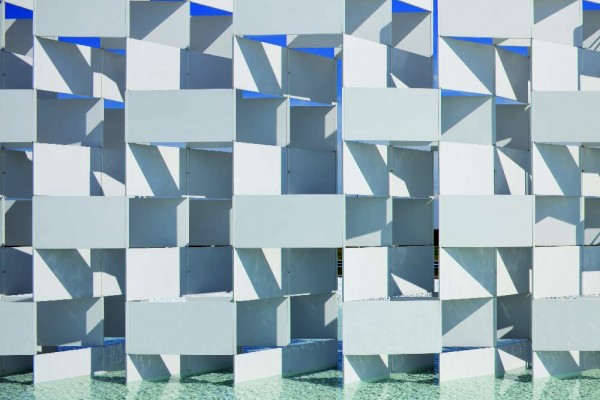The Casalgrande Ceramic Cloud, the first work of architecture in Italy by Kengo Kuma, the Japanese master, and a new symbolic gate of the ceramics district of Emilia Romagna, is located in the municipality of Casalgrande, in the province of Reggio Emilia. The work is located near the production works of Casalgrande Padana, the leading company in the production of unglazed stoneware and the buyer of the work itself.
The CCCloud transversally divides the space of a roundabout like a thin diaphragm curtain dynamically attracting the viewers’ sight. The layout plan of the work is oblong and streamlined at the ends and the central section reaches a maximum width of 1.7 metres. It is almost 12 metre tall.
For the first time, ceramic material is tested for structural purposes. Its 3D structure is composed of nine layers of large technical porcelain stoneware slabs – standard production items by Casalgrande Padana – placed one onto the others and interconnected by means of thin hidden threaded bars.
The innovative nature of the project and the need for unconventional solutions called for the active participation of Casalgrande Padana as co-protagonist of the project, constantly exchanging contributions and know-how: on one hand a constant and sophisticated instrumental verification, which has seen two groups of Italian and Japanese professionals involved in a constant remote dialogue; on the other hand the constant design and construction by the experts working for the company of the numerous prototypes which preceded the final construction.
“We wanted to avoid creating a monument that stands in the middle of the site: we wanted it to become part of the site. Therefore we decided to create a wall that simply divides the site in two making it a special place with a dual character, far from the usual and banal roundabouts. Our anti-monumental approach went far enough to decide aligning the direction of the ceramic wall with the road that leads to it so as to make it almost disappear: when reaching the site, drivers will only perceive a roundabout divided by a vertical line”. – Kengo Kuma




















